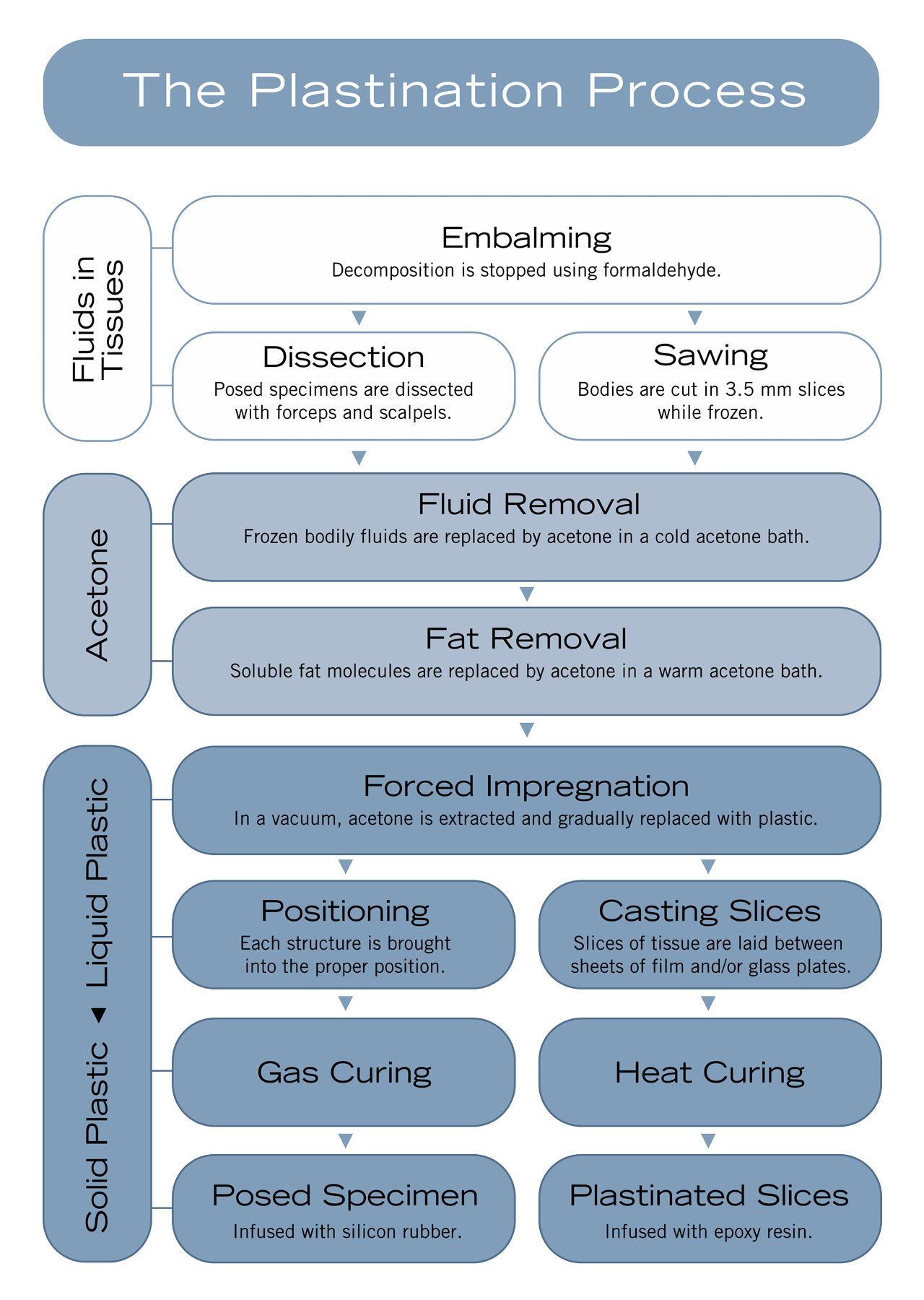Plastination Process
Invented by Dr. Gunther von Hagens
What Is Plastination?
Invented by Dr. Gunther von Hagens in 1977, plastination is a process used to preserve real, human bodies in six standard steps that take more than a year to complete. The end result can be safely touched without gloves, has no cadaver or formaldehyde smell, and will never decay or decompose.
The Six Steps of Plastination
-
Step 1: Fixation (Embalming)
During fixation, formaldehyde or other preservation solutions are coursed through the arteries, killing bacteria and preventing tissue decomposition.
3 – 4 Hour Prep, 1 Year Process
-
Step 2: Dissection
All skin and fatty and connective tissue is removed in order to strategically prepare the anatomical structures and elements for the next step, dehydration.
500 – 1,000 Hours of Labor
-
Step 3: Dehydration (Fluid Removal)
At this stage, plastination departs from traditional preservation techniques. Water and soluble fats are dissolved from the body and replaced by acetone.
4 Months
-
Step 4: Forced Impregnation
Submerged in liquid polymer, such as silicone rubber, polyester or epoxy resin, the specimen is put into a vacuum, causing the acetone to vaporize, leaving the cells to draw in the liquid plastic.
2 Months
-
Step 5: Positioning
Still flexible, the body is strategically aligned and fixed with wires, needles, clamps and foam blocks – a process that requires expert anatomical knowledge and strong aesthetics.
2.5 Months
-
Step 6: Curing (Hardening)
Gas, light or heat is introduced to protect against decomposition and decay. The result yields durable plastinates that retain most of their original properties, including precise weight.
1.5 to 2 Months


